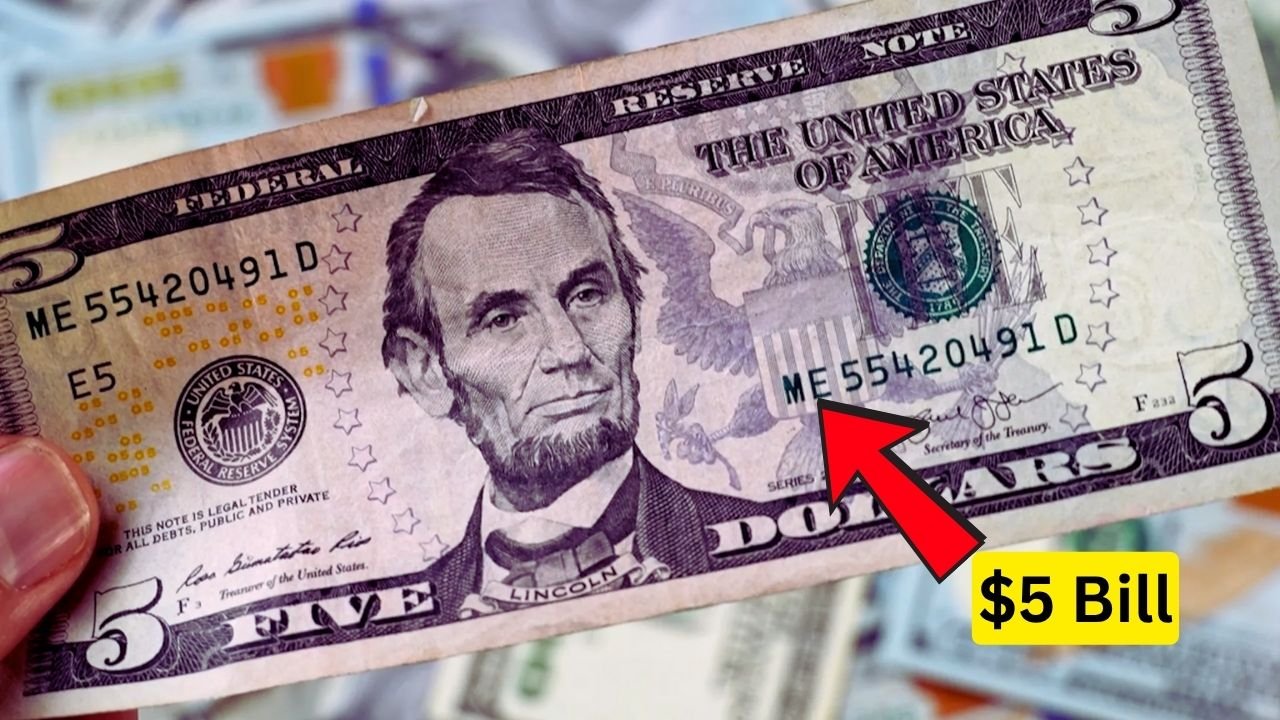A Cashier’s Lucky Find
In a small convenience store in Texas, cashier Lisa Carter stumbled upon a $5 bill that turned out to be a goldmine. While sorting through cash in June 2025, she noticed a 2013 $5 bill with an unusual serial number: 34343434. Intrigued, she tucked it away and later researched it online. To her shock, this “super repeater” bill, where the same two digits repeat, sold for $635,000 at a recent auction. The find has sparked excitement among collectors, with many now checking their wallets for similar treasures.
The Allure of Fancy Serial Numbers
The $5 bill is part of the Federal Reserve Notes issued since 1914, featuring Abraham Lincoln on the front and the Lincoln Memorial on the back. What makes certain bills valuable is their serial number, an eight-digit code printed in green ink. Collectors love “fancy” serial numbers like repeaters, where a pattern like 34343434 or 12121212 stands out. The 2013 series, printed in large numbers, occasionally produced these rare patterns, making Lisa’s bill a standout. Its near-mint condition and unique repeating pattern drove its auction price sky-high.
How to Spot a Repeater Serial Bill
To find a valuable $5 bill like Lisa’s, check these details carefully:
- Serial Number: Look for a repeating pattern, like 34343434 or 56565656, where two digits repeat four times.
- Year: Focus on 2013 series bills, though other years can have repeaters too.
- Condition: Bills with no folds, tears, or stains are worth more.
- Federal Reserve Letter: Check the letter (A to L) before the serial number, as some banks are rarer.
- Magnification: Use a magnifying glass to confirm the serial number’s clarity.
Never clean or fold the bill, as damage lowers its value significantly.
| Feature | Repeater Serial Bill |
|---|---|
| Serial Number | Repeating (e.g., 34343434) |
| Year | 2013 (or others) |
| Condition | Uncirculated, no damage |
| Reserve Letter | A to L, varies by bank |
Other Valuable Serial Numbers
Besides repeaters, other fancy serial numbers can fetch high prices. A “solid” serial number, like 77777777, can sell for $10,000 or more. “Radar” numbers, which read the same forward and backward (e.g., 12344321), often go for $1,000 to $5,000. Low serial numbers, like 00000001, are also prized, with one 2013 $1 bill selling for $15,000. Star notes, marked with a star at the end of the serial, can be valuable if they have a fancy pattern. Check old wallets or cash drawers for these hidden gems.
| Serial Type | Value Range |
|---|---|
| Super Repeater | Up to $635,000 |
| Solid Serial | $10,000 – $100,000 |
| Radar Serial | $1,000 – $5,000 |
| Low Serial | $10,000 – $15,000 |
What to Do If You Find One
Lisa’s bill was authenticated by Paper Money Guaranty (PMG), which graded it as Gem Uncirculated, boosting its value. If you find a bill with a repeater serial, store it in a protective sleeve and avoid handling it too much. Contact a grading service like PMG or PCGS Currency to verify its authenticity. Lisa sold her bill through a major auction house, where collectors bid fiercely for its rare pattern. Online platforms like eBay also list fancy serial bills, but auctions often yield the best prices for certified notes.
A Treasure in Everyday Change
Lisa’s $635,000 find proves that ordinary cash can hide extraordinary value. The 2013 $5 bill’s super repeater serial number made it a collector’s dream, sparking a wave of interest in fancy serial numbers. Whether you’re at a store or sorting through old cash, check those serial numbers closely. A quick glance could uncover a bill worth thousands or even millions. Keep a magnifying glass handy, and you might just find the next big treasure in your pocket.
